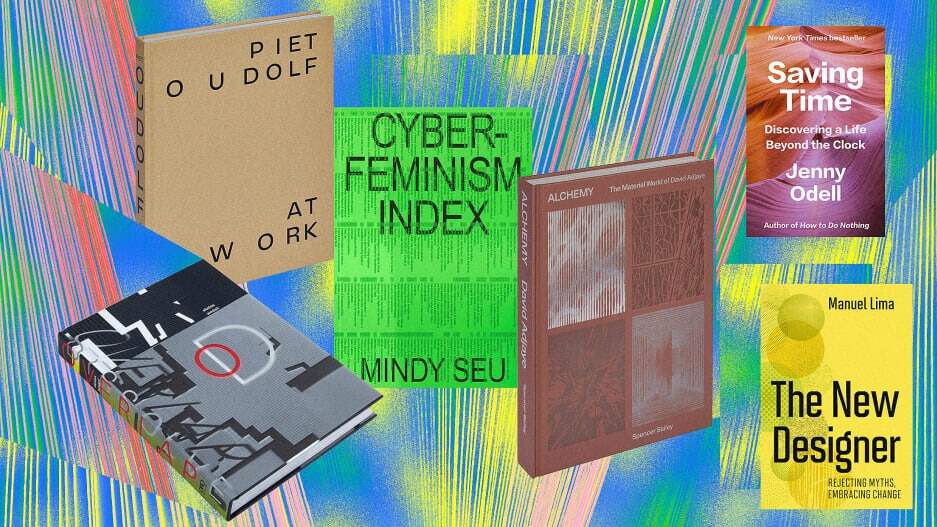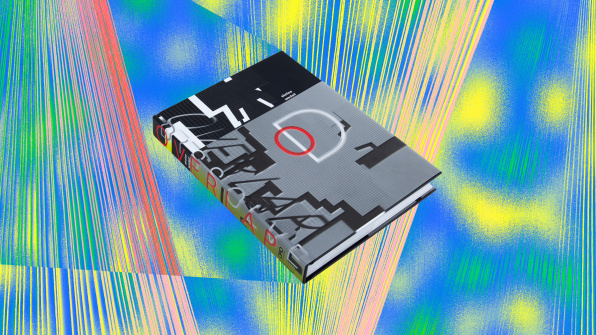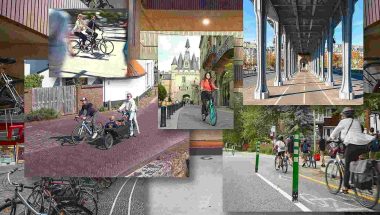- | 8:00 am
6 essential design books to read this summer
These aren’t beach reads. They’re books for reading from the comfort of your air conditioned living room.

We’re not quite halfway through the year and there’s already been a flood of new design books filling my shelves. The summer months, for me, are a time to catch up on those books, but the books I turn to over the summer also need to be a reprieve. They can’t feel like work. Indeed, the summer should be a time for slower, more casual reading. Heavy, text-focused books are replaced with breezy reads and visual monographs: the kind of books I want with me when I kick my feet up to relax in my garden. This is not to say I’m not learning something; I want books that I can settle in with that still challenge me and expand my interests. Included here are six new books that are doing that for me this year.

PIET OUDOLF AT WORK, PHAIDON
There’s no better summer book and a book filled with large, full-bleed images of beautiful gardens. That’s what we get in Piet Oudolf At Work, a new monograph on the Dutch landscape architect and garden designer. As part of the “new perennial” movement, which replaced scrub and tree-heavy landscapes with layered, dense flower-focused gardens, Oudolf creates gardens that are highly organized yet feel as if they sprung up out of nowhere, much like the work he did landscaping New York City’s Highline. The best part of this book, however, is the full-size reproductions of Oudolf’s drawings and diagrams, giving us an otherwise unseen glimpse into his creative process and the evolution of a garden.

THE NEW DESIGNER BY MANUEL LIMA
Designer and author Manuel Lima writes in his important new book that the old ways of practicing design no longer work and that it’s time to rethink design. Organized around myths in the design industry (from the obvious “design is perfection” to the provocative “design is for humans”), Lima proposes that the designer of the future is focused equally on the product and the system, the user and the environment, the aesthetics, and the ethics. Lima’s prose is friendly and accessible and each chapter ends with actionable advice for designers to immediately apply to their work.

ALCHEMY: THE MATERIAL WORLDS OF DAVID ADJAYE BY SPENCER BAILEY
Writer and editor Spencer Bailey argues that the way to understand architect David Adjaye’s buildings (perhaps best known is his design for the Smithsonian National Museum of African American History in Washington D.C.) is through the materiality in his work. Organized by the major materials Adjaye employs—concrete, wood, stone, etc.—Bailey deconstructs the typical architecture monograph to find new connections and meanings in Adjaye’s work. (I’d be remiss to not comment on the materiality of the book itself: the different paper stocks, the textures, and the feel of this book is immediately noticeable. It’s one of the best-feeling books I’ve held in recent years.)

CYBERFEMINISM INDEX BY MINDY SEU
Don’t be turned off by the size of the spine or the page count (just shy of 600 pages): Designer and researcher Mindy Seu’s epic Cyberfeminism Index is a fun and engrossing look at the history of cyberfeminism, a term that is traced back to the early ’90s to draw connections between feminism and technology. Organized into five sections: reading lists, annotated entries, source titles, prominent figures, and images, the book mixes graphics, logos, screenshots, and video stills that encourage one to open to a random page, flipping through as your own interest. No matter where you land, you’ll discover something new.

OVERLAP/DISSOLVE BY NANCY SKOLOS AND TOM WEDELL
Since Nancy Skolos, a graphic design student, met Tom Wedell, a photography student, on the Cranbrook Academy of Art’s campus outside Detroit in the 1970s, they’ve collaborated—mixing his photographs with her typography—fell in love, graduated, got married, started a studio, and began teaching at RISD. Through it all, they’ve created what I think to be some of the most singular and original graphic design work of the last 50 years. In looking through the pages in the couple’s first monograph, Overlap/Dissolve, I was struck, again and again, about how their work, even now, still looks like nothing else throughout graphic design history. The couple makes work that confounds the viewer: analog processes that look digital, flat work that feels three-dimensional, employing graphic design principles while feeling like fine art. The originality in their work is made evident in this book, which condenses four decades of work into a mere 300 pages. Bookended by a highly-personal dialog between the two, we are treated with insights into collaboration, process, the rise of technology, and the joys of teaching.

SAVING TIME BY JENNY ODELL
Perhaps because Jenny Odell studied design and works as an artist, I can’t help but read her work as a piece of design criticism. Her first book, How to Do Nothing, was a subversive work of technology writing that encouraged us to rethink how we spend our lives. You could argue that her new book, Saving Time, looks at the design of time itself—how we track it, how we spend it, how it’s bought and sold—and how we can break free of the way the clock designs our lives. (She write about how the clock we all know, in fact, was designed for profit. In doing so, Odell shows us new ways to experience time and to uncover new rhythms in our lives. If that’s not what summer is for, I don’t know what is.






































